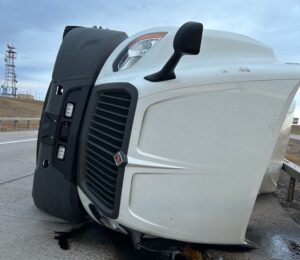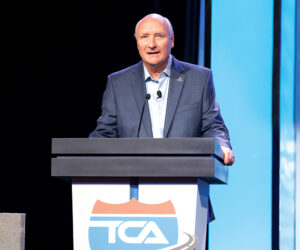Here we go again.
News came late last month that Indiana Republican Sen. Todd Young has been part of bipartisan group of members of Congress who had introduced (oops, reintroduced) a bill that they said would address the driver shortage and enhance safety training and job opportunities for young truck drivers.
Of course, the first order of business last August was to come up with a flashy name that could be boiled down to a fancy acronym — Developing Responsible Individuals for a Vibrant Economy (DRIVE-Safe) Act.
Next was coming up with a constituent-satisfying quote to promote the bill.
“Indiana is the crossroads of America and the truck driver shortage has a significant impact on our state,” Young said in a news release issued last August. “As I’ve traveled throughout Indiana, I have heard from Hoosiers that a pathway is needed to qualify more drivers to move goods safely and efficiently. The DRIVE-Safe Act will help address the driver shortage, enhance safety, and create new career opportunities for young Hoosiers.”
Hey, what worked well once, might work again.
“Indiana is the Crossroads of America and the truck driver shortage has a significant impact on our state,” the quote in the February 2019 news release read. “As I’ve traveled throughout Indiana, I have heard from Hoosiers that a pathway is needed to qualify more drivers to move goods safely and efficiently. The DRIVE-Safe Act will help address the driver shortage, enhance safety, and create new career opportunities for young Hoosiers.”
But it didn’t work last time.
Nothing did.
The DRIVE-Safe Act never got out of committee.
So many pieces of legislation wind up on the cutting room floor.
Prediction: Don’t expect this session’s DRIVE-Safe to fare any better.
The DRIVE-Safe Act would establish an apprenticeship program that would allow for the legal operation of a commercial motor vehicle in interstate commerce by CDL holders under the age of 21.
The apprenticeship program would require young drivers to complete at least 400 hours of on-duty time and 240 hours of driving time with an experienced driver in the cab with them. All trucks used for training in the program must be equipped with safety technology including active braking collision mitigation systems, a video event capture system and a speed governor set at 65 miles per hour or below.
The truck must have an automatic manual or automatic transmission.
As for helping with the driver shortage, the industry can’t agree on whether there is even a driver shortage.
The American Trucking Associations says yes to the tune of 50,000.
The Owner-Operator Independent Drivers Association says no and what’s really needed is better pay and benefits.
One thing’s for sure.
There are plenty of trucks sitting empty.
Our office is located in Little Rock, Arkansas.
Two large truckload carriers call this area home — Maverick USA and CalArk International.
Drive by their location any time of the day and there will be numerous empty tractors on the lot.
Those tractors are not there just for show; they cost money and they aren’t making any money for Maverick and CalArk.
(I wonder if our transportation system could handle 50,000 more trucks on the road every day, but that’s another story.)
The final quirky piece of this puzzle is intrastate versus interstate.
My wife and I grew up in Fort Smith, Arkansas, which borders Oklahoma (there’s one street, half of which is in Arkansas, the other half in Oklahoma).
Fort Smith provides goods and services to a goodly portion of extreme eastern Oklahoma.
Somehow, it’s never made sense that an 18- 20-year-old CDL holder could drive back and forth between Little Rock and Fort Smith (160 miles), but not between Fort Smith and Sallisaw, Oklahoma (25 miles).
Bottom line is don’t expect to see 18- 20-year-old truckers driving interstate commerce any time soon.
Lyndon Finney’s publishing career spans over 55 years beginning with a reporter position with the Southwest Times Record in Fort Smith, Arkansas, in 1965. Since then he’s been a newspaper editor at the Southwest Times Record, served five years as assistant managing editor of the Arkansas Democrat-Gazette in Little Rock and from November 2004 through December 2019 served as editor of The Trucker. Between newspaper jobs he spent 14 years as director of communications at Baptist Health, Arkansas’ largest healthcare system. In addition to his publishing career he served for 46 years as organist at Little Rock’s largest Baptist church.















